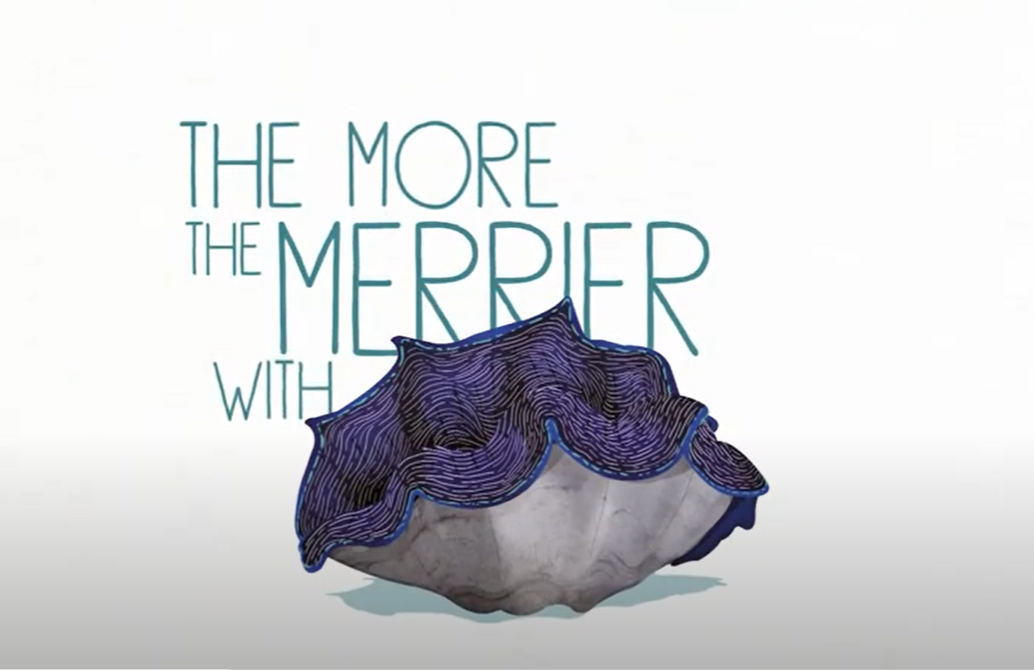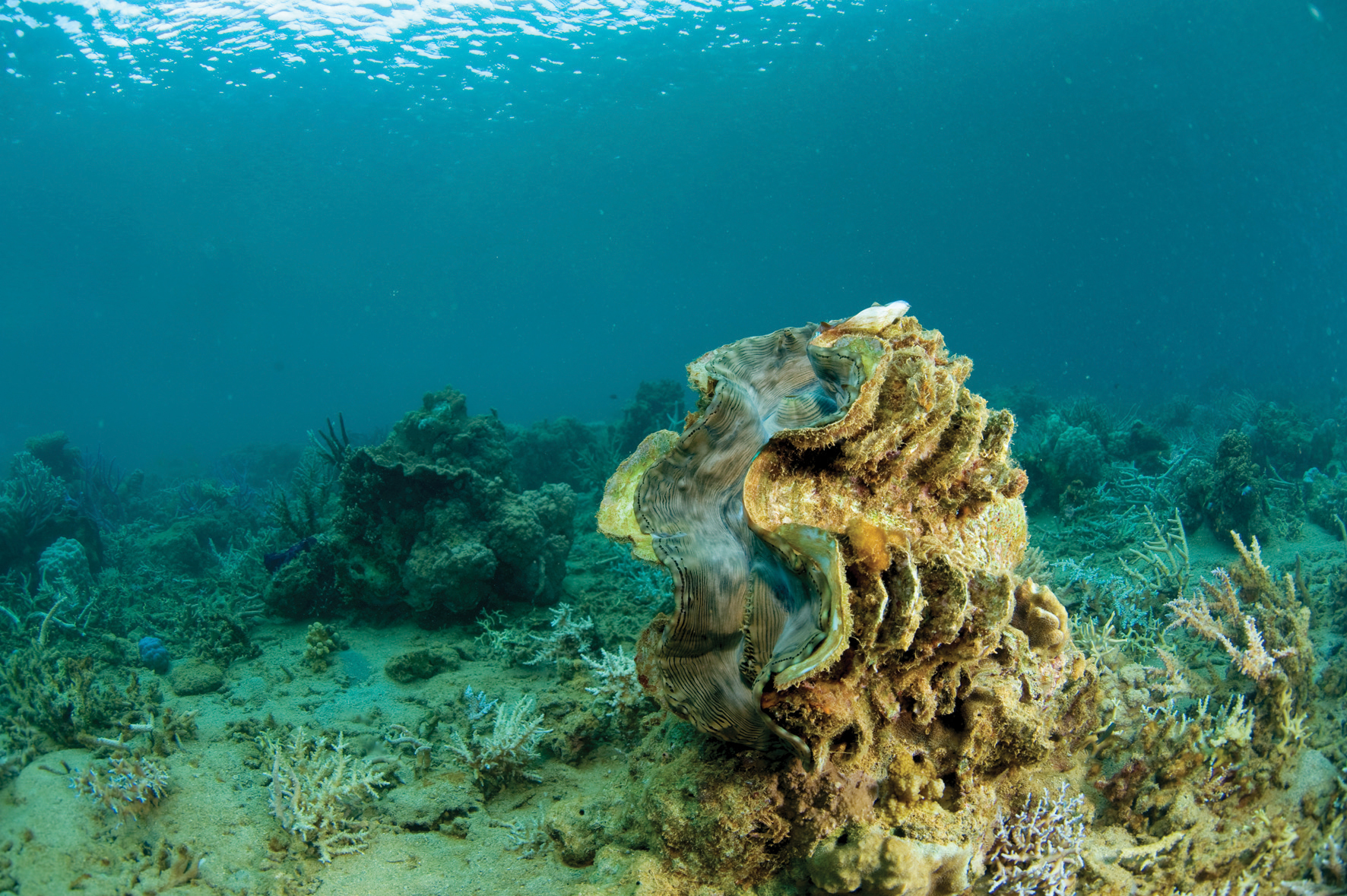Image: © Matthieu Juncker
To gain access to full information on giant clams, download the information sheet produced by the LMMA Network and SPC.
If you have noticed a decline in your catches or are concerned about giant clam populations, here are some priority actions the community can consider in addition to national regulations:
Fish smart rules
Gear restrictions
A ban of the use of underwater breathing apparatus, which would provide some protection for larger clams living in deeper water where they may produce young that settle in shallower water areas;

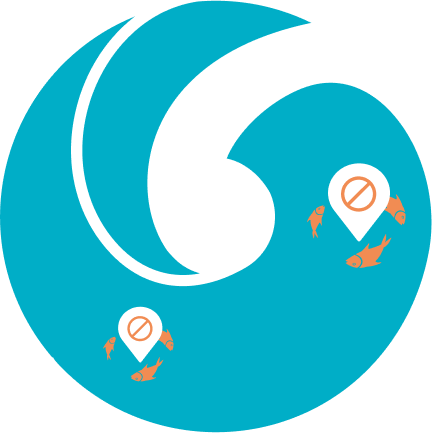
Tabu areas
Establishing reserves (no take areas) in which the taking of giant clams is banned. In these reserves, the presence is needed of large numbers of clams in small areas, so that sperm have a better chance of fertilising eggs released by nearby clams. The time in which the small drifting (larval) stages float in the sea (about 10 days) may result in juvenile clams settling in nearby down-current areas where they can grow and eventually be collected.
Good to know: size limits should be applied to individual species of giant clams
In some cases, size limits have been applied collectively to all species (for example, 180 mm across the shell for all species). However the limit may be too large for the smaller clams, such as the elongate giant clam, Tridacna maxima, which grows to 350 mm and too small for the larger species such as the smooth giant clam, Tridacna derasa, which grows to 600 mm. To be effective, size limits should be applied to individual species. Access to guidelines on catch regulations can be found here, by selecting size limits in ‘select regulations’ and filtering by species.
Fishing methods
Giant clams may be collected by hand at low tide. They are also taken by free diving, although unfortunately, underwater breathing apparatus is sometimes used.
Management measures in the region
The management of giant clam stocks is important as many species have been overfished and have disappeared from many local areas in the Pacific. Many fishery authorities have applied minimum legal size limits with the intention of allowing clams to spawn at least once before capture. Some fishery authorities have banned the commercial harvest of giant clams and have placed catch or bag limits on clams collected for personal use (variously 3 to 10 clams per person per day). The local sale of clams to hotels and restaurants may be banned or strictly controlled. National authorities can play an important role in banning the export of clams and preventing the illegal collection of clams by foreign fishing vessels.
Some species
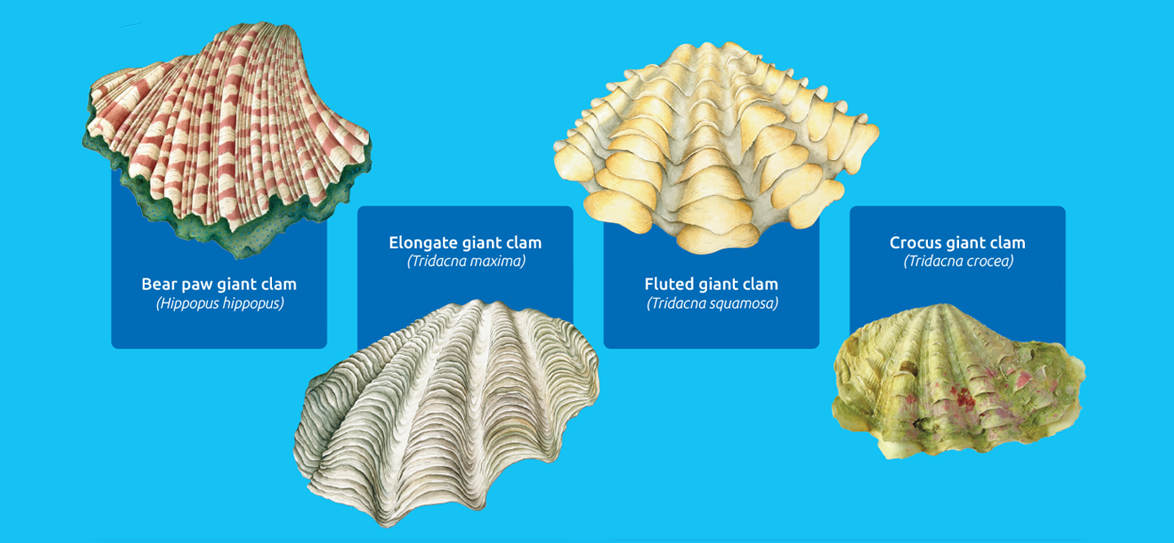
Tridacnid clams include several species commonly called giant clams, which have various distributions in the Indian and Pacific Oceans.
Species range in size from the 15 cm crocus giant clam, Tridacna crocea, to the true giant clam, Tridacna gigas, which grows to lengths of more than 1 m and reaches weights of more than 200 kg.
The elongate giant clam, Tridacna maxima, has perhaps the widest distribution among giant clam species in the Pacific, followed by the fluted giant clam, Tridacna squamosa. In these species, the colour of the flesh exposed when the shells gape open (the mantle) ranges from browns and purples to greens and yellows. The bear paw giant clam, Hippopus hippopus, which grows to about 40 cm, has a mantle which is yellow and grey.
The elongate giant clam, Tridacna maxima, and the crocus giant clam, Tridacna crocea, appear to be buried in large corals, the latter to the upper edges of its shells.
Giant clams feed by filtering food (small drifting plants) from the seawater that passes through their openings (see illustration). They can also obtain food from the very small plant cells (called zooxanthellae) that live within the flesh of the clam. Because the plant cells within the flesh require sunlight, giant clams can only live and grow in water that is clear and shallow.
Giant clams begin life as males and mature at about 2 years of age, after which they act as both males and females.
Spawning occurs during the warmer months when clams, becoming aware of eggs in the water, release sperm through their outlet openings. About 30 minutes after releasing sperm, an individual clam releases its own eggs, thereby avoiding the eggs being fertilised by its own sperm.
The number of eggs released by each individual varies between species, and hundreds of millions are produced by large individuals. The fertilised eggs hatch into very small floating forms (larval stages) that drift in the sea for about 10 days. Less than one in every thousand of the small floating forms survives to become a young clam (juvenile) that settles permanently on the sea floor. And less than one in every hundred juveniles survives to become a mature adult.
Related resources
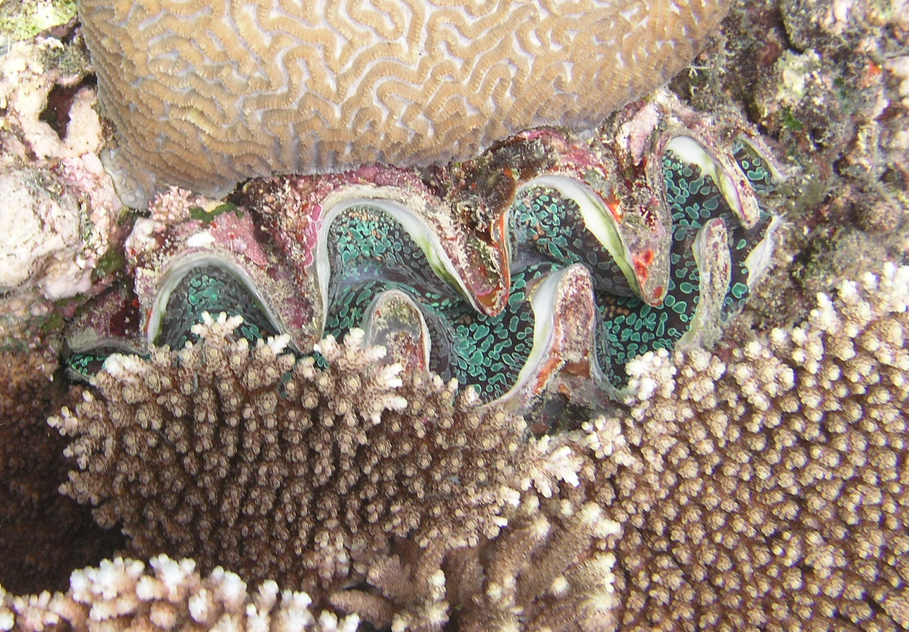
To gain access to full information on giant clams, download the information sheet
